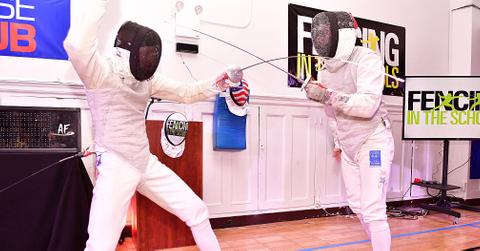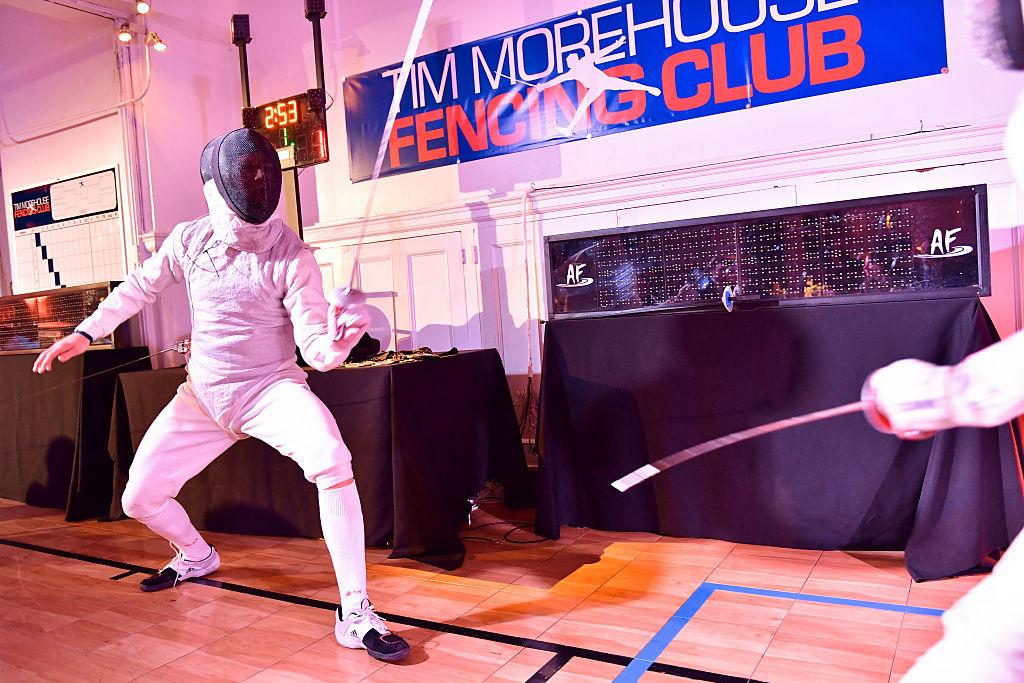Here's What the Cable Attached to Fencers Does
Fencers are attached to a cable to keep proper scoring and ensure that weapons are hitting their mark.
Published July 29 2024, 7:13 p.m. ET

Those tuning into the 2024 Summer Olympic Games have probably gotten to see a couple of sports they don't usually get to. With 32 different sports having international representation at the summer games, there are some sports with rules that most viewers won't be familiar with.
Fencing is one of those sports viewers don't often get to see in action. Those tuning in are probably confused by some of the details of the sport that's been part of the international games since the very first iteration in Athens in 1896.
Competitors each have a cable connected to them as they face off against their opponent, but why are they attached to a cable?

Why are fencers attached to a cable?
The cable, known as the body cord, connects the competitor to a reel of wire that is used for determining scoring. As the weapons used in the sport are incredibly small, it's sometimes hard to see when or if it has successfully made contact with the other competitor. This is where the body cord comes in.
There are two different cords that fencing players have connected to them: one is connected to the epee and one connected to the weapon. The uniforms are wired so that the judges and referees can accurately determine whether or not one competitor's weapon has made contact in a valid target area.
However, this does not cause any harm to the participant. Though attaching a wire to an athlete may seem like a dangerous move, when the wire or weapon make contact with anything other than the valid target areas, there is no harm done to the other opponent.
The validity of these body cords is extremely important, as any fencer who provides a faulty one to a match is penalized with a yellow card.